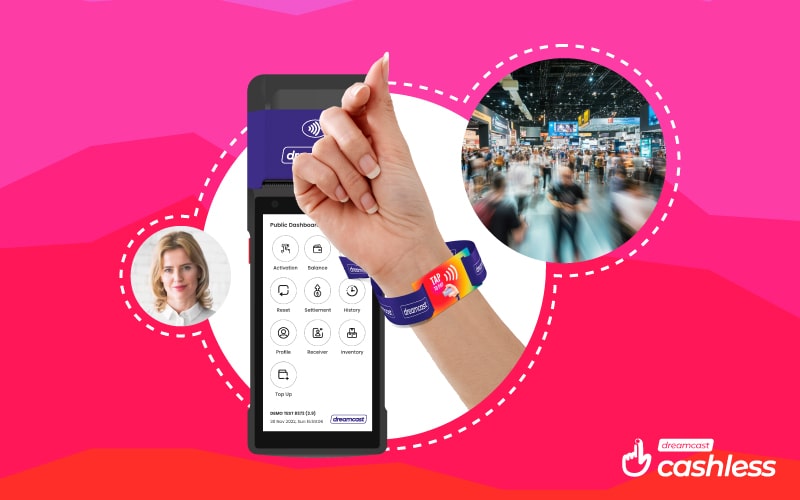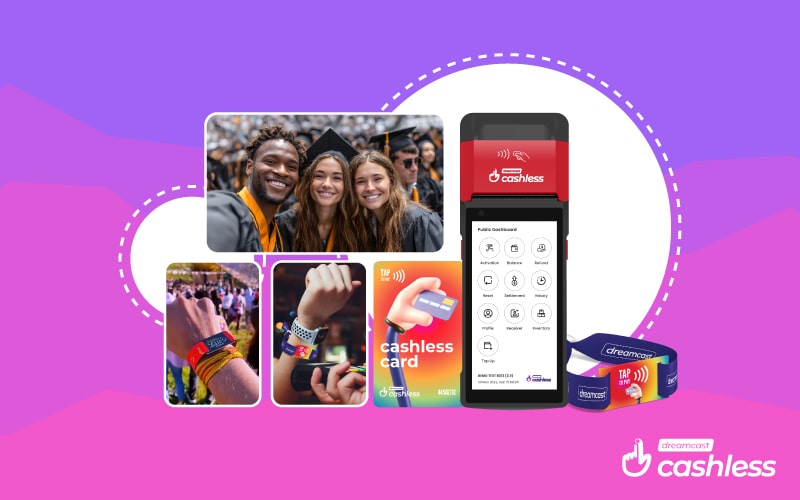Radio-frequency identification (RFID) has emerged as a one-stop solution for events and festivals with a wide array of applications. RFID wristband users tend to spend more than cash users. So, it’s important to understand how RFID wristbands for events exactly work and its versatile uses.
This article provides an in-depth understanding of the working mechanisms of RFID wristbands and bracelets and talks about a variety of applications.

Components of RFID Wristbands for Events
RFID tags/chips:
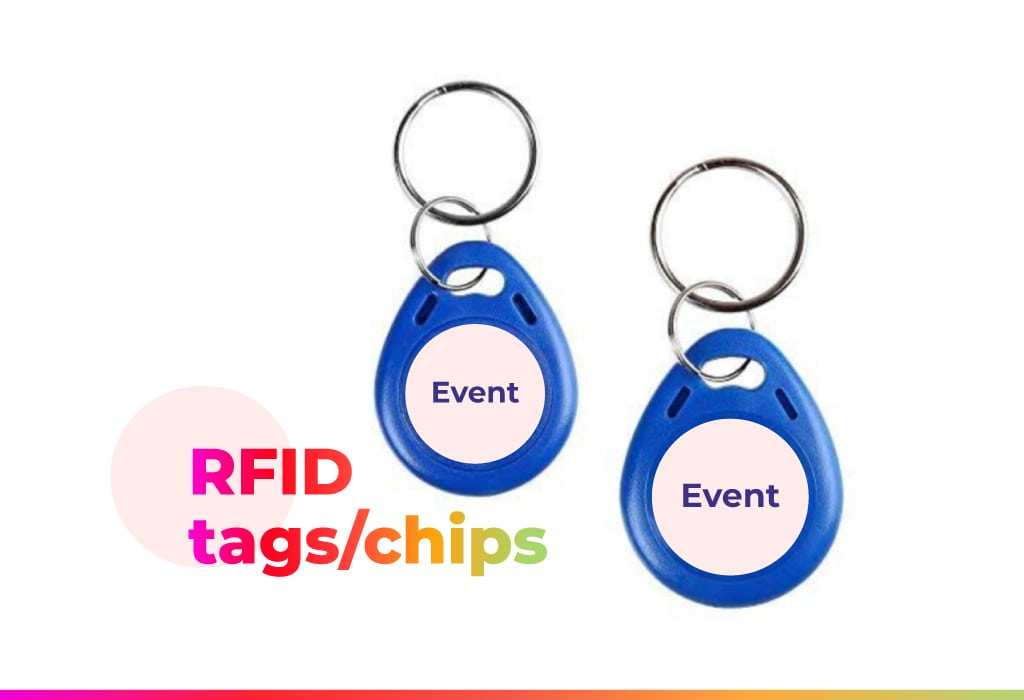
At the heart of every RFID wristband or bracelet lies a tiny yet powerful electronic component—the RFID tag or chip. This component comprises an antenna and a memory chip. The memory chip stores the information. Also, the antenna facilitates communication with an RFID reader.
Antenna:
The antenna is a crucial element that enables the transmission of radio waves between the RFID tag and the reader. It plays a pivotal role in ensuring seamless communication by transmitting and receiving radio waves.
Enclosure:
To make the RFID wristbands for events wearable and durable, the RFID tag and antenna are enclosed in a protective material. This enclosure is typically made from materials like silicone or fabric, ensuring both comfort and longevity, depending on the intended use.
RFID Reader:
The RFID reader is the device that communicates with the RFID chip in the wristband. Point-of-sale (POS) terminals include this kind of reader, allowing for seamless transactions.
How Do RFID Wristbands for Events Work
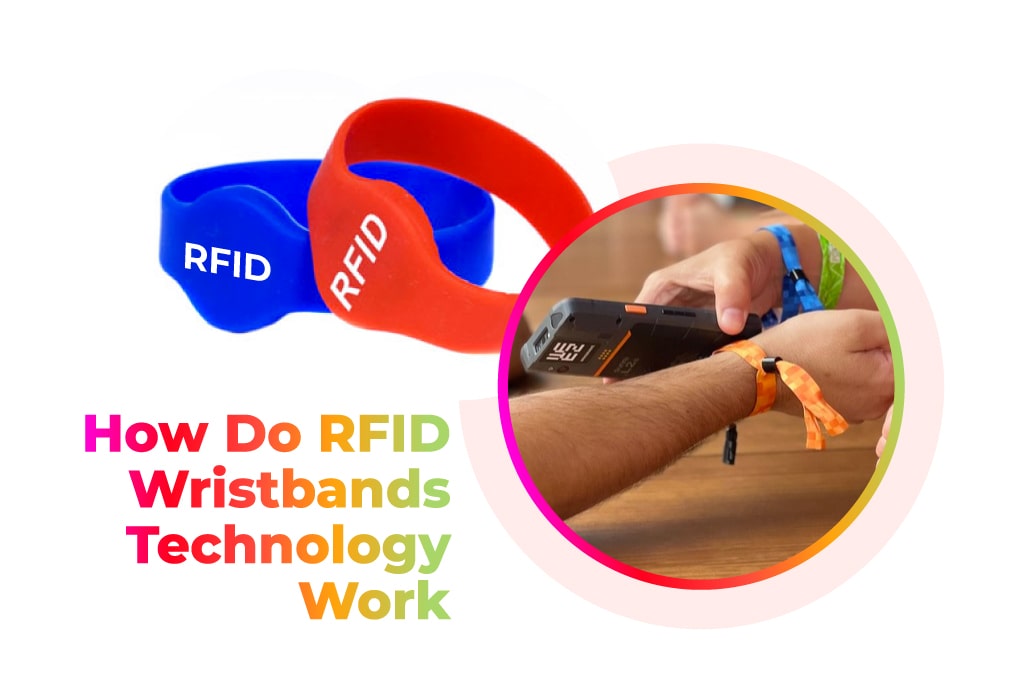
Here is the working mechanism of RFID wristbands at events with the following steps:
Step 1: Initialization of the Tag
Each RFID tag that is included in the wristband is pre-programmed with data related to its function before the event starts. A unique identification number, attendance information (such as name and ticket type), access permissions, or associated payment credentials are a few examples of this data. This initialization procedure guarantees that every wristband is distinct and useful for its designated purpose, whether it is attendance monitoring, cashless transactions, or access control.
Step 2: Radio Wave Transmission
The RFID technology uses radio waves to function. The RFID tag implanted in the wristband is activated by the electromagnetic field produced by the RFID reader when the wristband approaches it. RFID chip is powered by this energy, which enables it to operate without an internal power source. The wristband and the system may communicate seamlessly since the activation procedure is almost immediate.
Step 3: Transmission of Data
When the RFID chip is triggered, modulated radio frequency signals are sent back to the reader with the recorded data. This information may consist of payment credentials, access permissions, or attendance ID. The signal is picked up by the reader’s antenna, which decodes it before sending it to the backend of the system for further processing. This stage guarantees the safe and effective transmission of the required information.
Step 4: Processing and Verification

The RFID reader receives the sent data and compares it with the event’s central database to confirm its legitimacy. The process of verification makes sure that the person wearing the wristband has the right documents, such as a legitimate ticket or enough money to make a transaction. After verification, the system analyzes the data and takes the appropriate action, such as completing a cashless transaction, recording attendance, or allowing admission to a VIP area.
Step 5: Initiating Activities
The system initiates the proper reaction based on the validated data. For instance:
- Access control: Permits or prohibits access to areas that are restricted.
- Using cashless payment methods, the purchase price is subtracted from the prepaid balance.
- Attendance logging: Keeps track of attendees’ presence at a certain place.
- Engagement Activities: Starts customized experiences, including turning on picture booths or revealing exclusive deals.
Applications of RFID Wristbands and Bracelets
Wondering how to use RFID bracelets? Or you might be struggling to decide whether or not to invest in a cashless RFID technology. That’s why knowing how RFID bracelets or wristbands exactly work is important. Here are several applications and use cases of RFID wristband technology.
Access Control:
One of the most common applications of RFID wristbands is in access control systems. These are widely used in events, concerts, and amusement parks, where attendees can gain entry by simply having their RFID event wristbands scanned.
Cashless Payments:
RFID event wristbands have seamlessly integrated into the world of cashless payments at festivals, resorts, and entertainment venues. Users experience 80% faster transactions by scanning their wristbands when compared to cash, eliminating the need for physical currency or cards.
Asset Tracking:
Industries such as logistics and manufacturing benefit from the use of RFID bracelets for efficient asset tracking. This aids in real-time monitoring and management of valuable assets, reducing the risk of loss or theft.

Real-World Examples of RFID Wristband Payments
RFID technology applications in cashless payments has transformed the way transactions are conducted. RFID-based cashless payment systems offer a convenient, efficient, and secure alternative to traditional payment methods. Here are several real-world examples of RFID in cashless payments:
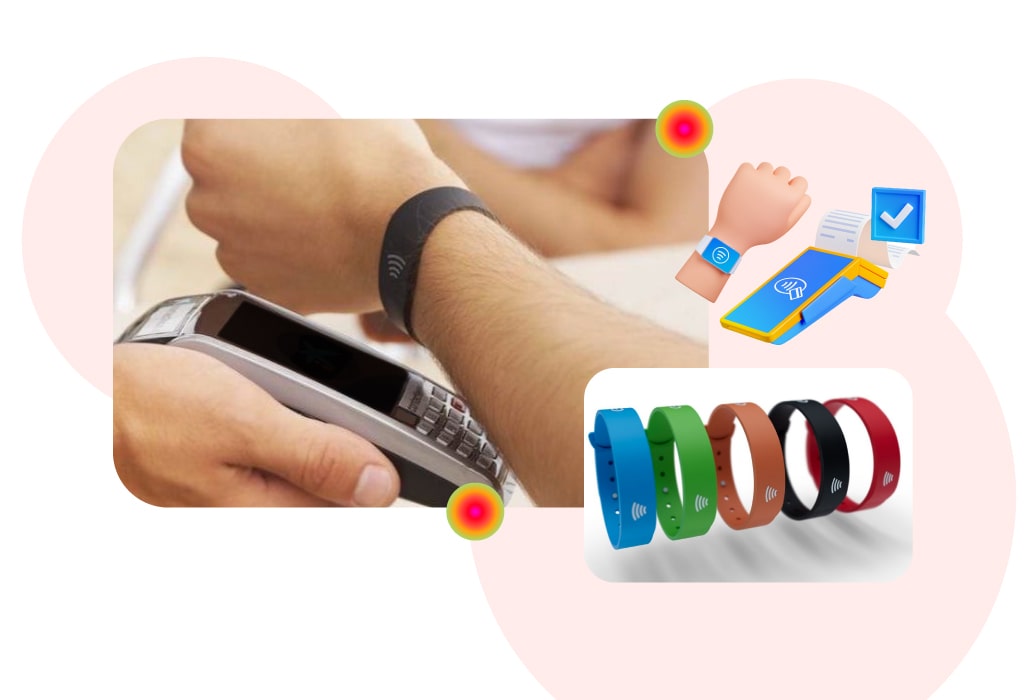
Events and Festivals:
Entry Access and Ticketing: RFID wristbands for events have made entry and ticketing seamless. To access the event venue, attendees simply tap their RFID-enabled wristbands at entry points. By eliminating the need to carry paper tickets, RFID bracelets are an efficient solution for cashless ticketing.
Read more about the use of RFID for events.
Cashless Purchases: RFID technology enables cashless transactions for food, beverages, merchandise, and other services within the event premises. Attendees can also load money onto their RFID event wristbands and make purchases with a simple tap, reducing queues and providing a seamless payment experience.
Amusement Parks and Attractions:
Admission and Ride Access: RFID wristbands serve as admission tickets to amusement parks. Additionally, these cashless solutions for theme parks grant access to specific rides or attractions, ensuring a personalized and controlled experience for visitors.
In-Park Spending: Visitors can load funds onto their RFID wristbands to make purchases within the park, such as meals, souvenirs, and photos. This enhances convenience and encourages spending within the park premises.
Retail and Hospitality:
Point of Sale (POS) Systems: RFID technology facilitates quick and secure transactions at retail stores, restaurants, and hotels. Customers can make purchases by tapping their RFID wristbands or bracelets on POS terminals, reducing transaction times and enhancing the overall shopping experience.
Loyalty Programs: RFID-based cashless systems can integrate with loyalty programs, allowing customers to earn points or receive discounts automatically with each purchase. This encourages customer retention and repeat business.
Stadiums and Sports Venues:
Ticketing and Seating Access: RFID event wristbands or cards serve as electronic tickets, granting spectators access to sports events and concerts. The technology can also control access to premium seating areas.
Concession Purchases: RFID-enabled wristbands enable cashless transactions for concessions, merchandise, and other services within stadiums and sports venues, enhancing the overall fan experience.
Benefits of RFID Wristband Technology for Events

RFID wristband technology has transformed event management, offering a plethora of benefits to event planners and organizers. Let’s explore some of the benefits of RFID bracelets for events and venues:
Effortless Access Control:
RFID wristbands for events streamline entry processes by replacing traditional tickets or paper passes. Attendees can simply tap their wristbands at designated entry points, reducing queues and ensuring swift access control.
Enhanced Security:
The unique identification embedded in RFID bracelets adds an extra layer of security. This helps prevent counterfeiting or unauthorized access, providing organizers with greater control over event security.
Cashless Transactions:
RFID event wristbands serve as virtual wallets, allowing attendees to load funds onto their wristbands for cashless transactions. This not only speeds up the payment process but also reduces the risk of theft or loss associated with physical currency.
Seamless On-Site Purchases:
Beyond entry fees, RFID event wristbands facilitate seamless on-site purchases for food, beverages, merchandise, and other services. Attendees can enjoy the event experience without the need for physical wallets or cards.
Accurate Attendance Tracking:
Organizers can easily monitor attendance and gather valuable insights into attendee behavior. This data can inform future event planning, helping organizers tailor their offerings to the preferences of their audience.
Reduced Queues and Wait Times:
The efficiency of RFID bracelets significantly reduces queuing times at various touchpoints within the event, from entry gates to food stalls. Attendees can enjoy more of the event and less time waiting in lines.
Data Analytics and Insights:
RFID wristband technology provides organizers with valuable data analytics, including attendance patterns, popular attractions, and demographic information. This data is perfect for post-event analysis and future planning.
FAQs:
RFID (Radio Frequency Identification) wristbands use embedded chips that communicate with RFID readers when scanned. For events, they streamline entry, track attendee movement, enable cashless payments, and provide valuable data for event management. The RFID wristbands are activated upon distribution and can be customized to store ticketing, payment, or personal attendee information.
RFID wristbands allow for instant scanning at entry points, reducing long lines and manual ticket checks. Attendees simply wave their wristbands over an RFID reader, which validates their access in seconds, creating a seamless and efficient check-in experience for both staff and attendees
While both RFID and Near Field Communication (NFC) technologies use radio frequency for communication, they are not exactly the same. RFID is a broader term that encompasses various frequency ranges, while NFC operates at a specific frequency (13.56 MHz). NFC is a subset of RFID and is often used for short-range communication, such as contactless payments and data transfer between devices
RFID wristbands can be secure, depending on the implemented security measures. Advanced RFID systems may incorporate encryption and authentication protocols to enhance security. It’s important to assess the security features in place, especially for applications involving sensitive data.
RFID wristbands for events offer valuable post-event insights such as foot traffic patterns, popular attractions, attendee dwell times, and spending behavior. This data helps organizers analyze event success, improve logistics, and refine strategies for future events based on attendee behavior.




